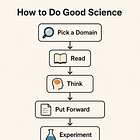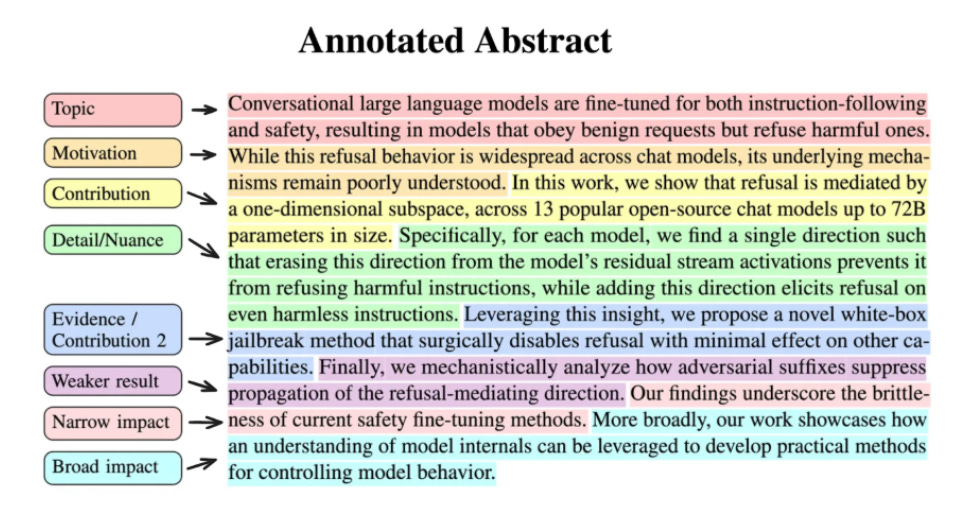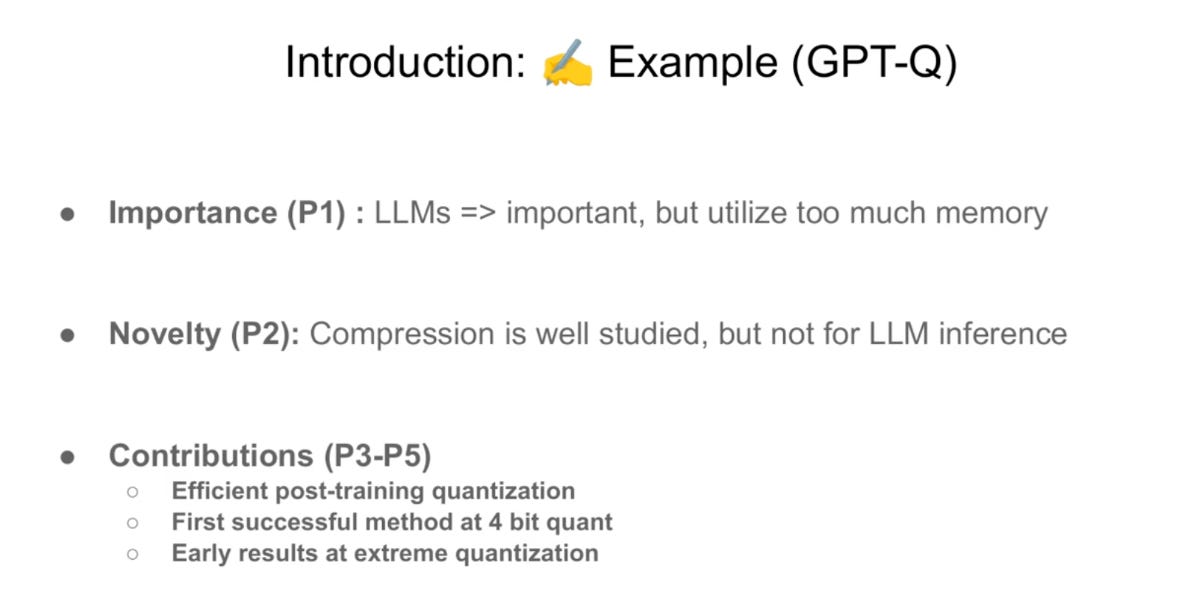Tips on writing your first research paper
aka, how to increase your odds of acceptance at an AI/ML conference
Lossfunk is a young AI lab with independent researchers, most of whom are yet to publish their first paper. This resource is a compilation of tips from established researchers on how to write an AI/ML paper.
If you’re an aspiring researcher, you may find the other resources that we’ve published earlier useful too. Check them out:
The way we see it - research is about finding answers to a question that a specific scientific community is still uncertain about. Science is a social process - if you find out something and nobody knows or cares about it, you really haven’t made any impact on the future of a field.
A good research output communicated badly will make little or no impact. So, spending a real effort in writing a paper is totally worth it.
Another benefit of spending time writing good papers is that the structure of a paper enforces rigour. You’re required to cite background literature, make evidence based claims, compare with baselines and do ablations - all this is simply good research. So, following “templates” for writing papers will prevent sloppy thinking and ensure that your rigour is maintained.
With all this said, let’s get to some tips on writing papers.
Highly Opinionated Advice on How to Write ML Papers
by Neel Nanda
Papers are evidence-backed narratives meant to influence intuition and understanding of peers in the field
What? One to three specific novel claims
How? Rigorous empirical evidence?
Why? Motivation and background/baseline/current methods
Impact
Make claims, motivate them, explain on intuitive or technical level, show evidence, contextualize what’s novel (in terms of prior literature)
Evidence
Quality > Quantity
Write iteratively
Abstract > Bullet point outline > Introduction > First full draft > Repeat
Focus on abstract, intro, figures
Most people will just skim through these
Inform, not persuade.
Precision, not obfuscation.
At its core, a paper is one to three specific novel claims
Everything else exists to support it
Second pillar of the paper is rigorous evidence for why they’re true
When to write a paper?
When you’ve learned something insightful that could be made legible to someone else.
Novelty
You can show what’s novel only by doing extensive literature review - so do that!
The reason novelty is an important criteria is because it expands collective knowledge. It’s a net new addition.
Best papers are highly surprising to peers.
A paper is worthless unless it can convince the reader of its key claims.
Baseliness are crucial. Find the strongest possible baseline to contextualize your work.
How to write an okay research paper
by Sasha Rush
Introduction
Motivate express novelty and importance as narrowly as possible, then follow up with 1-3 clearly defendable claims/contributions
Intro is often written last even though it comes first
Related work; how our work is different from others in the past
Use other works as a way to explain your work
Contrast with other attempts at reaching the same goal
Background
From neurips import x
Relevant background knowledge to understand this paper
Sufficient technical background with minimal notation
Methods
If i were to explain it to my past self, what would i include
High level -> low level (algorithm / pseudocode)
Experiments
By this time, reader should have enough context to anticipate experiments
You should write results of these anticipated experiments
Results
Support your claims
Use tables, captions should be standalone
Analysis
Robustness: whether small changes would lose results majorly
Ablations, baselines, quantitative analysis of known gains, explorations to check limits
Qualitative analysis
How to Get Your Paper Accepted
https://maxwellforbes.com/posts/how-to-get-a-paper-accepted/
TLDR:
Polish page 1 for acceptance
Rest of the pages avoids rejection
Treat page 1 like a landing page, and rest of the paper as real scientific evidence (to avoid rejection).
Think of all the reasons a reviewer might reject your paper, and avoid everything that comes up.
Page 1 has four parts:
Title
Abstract
Figure 1
Introduction
Specific, memorable, clear, communicative value and hook the reader.
Rest of the paper (see what’s the tradition, but often):
Baselines
Ablations
Statistical significance
Human evaluation
More tips:
Choose a specific memorable title
Title should be able to only describe your paper and no one else’s
Evoke the key concept of the paper
Maybe add branding
Dataset, method, project
Show screamingly obvious value in figure 1
Guide people to understand the main result of the paper, and how it works
Make everything explicit - don’t assume people would know
End each caption with a takeaway
Best hack!
Most people just look at the figures, so help them!
Abstract: specific valuable hook
Make it fun to read
Don’t make general claims
In introduction, motivate the work by building up the stakes of the problem and perceived value of solving it
Almost like what good pitches to
High value text poses problems with tension-filled language, articulating costs and benefits
Rest of the paper (clarity and completeness):
Improving all figures and tables
Ablations
Baselines
Rewriting conclusions
Human evaluation
Skimmers will look at the figures, tables and conclusions to get the gist of the paper.
Even more tips:
Use examples
Sprinkle graphics and always have takeaways in captions
Make your contribution shine in graphics
Conclusion: summarize abstract and introduction. Just the summary of what you did. Meat of what was achieved
What do we do?
Why is it great?
Why does it matter?
Your Paper Is an Ad
https://maxwellforbes.com/posts/your-paper-is-an-ad/
A paper is an:
Research Currency - an admit to the insider world of those who go to conferences, etc
Advertisement - primary purpose of a paper is to advertise an idea
One idea
People cannot retain more than one major idea per paper
Pitched well
Eight pages paper cannot explore an idea comprehensively, so you must pitch it well
Pitch the idea so well that conclusions can be wrong
Around a constructed central narrative
You don’t tell the story of how you got to the idea, but idea’s story
To tell idea’s story, you may need more work like ablations, baselines, comparisons to past work, experiments with variations of your idea
For professors
They are busy and operate in the space of ideas
But to appease reviewers, add everything that they may end up rejecting your work for
To achieve recognition
You and your idea must stick in people’s headspace
Brand marketing
What are you known for?
The author, Paras Chopra, is founder and researcher at Lossfunk.






